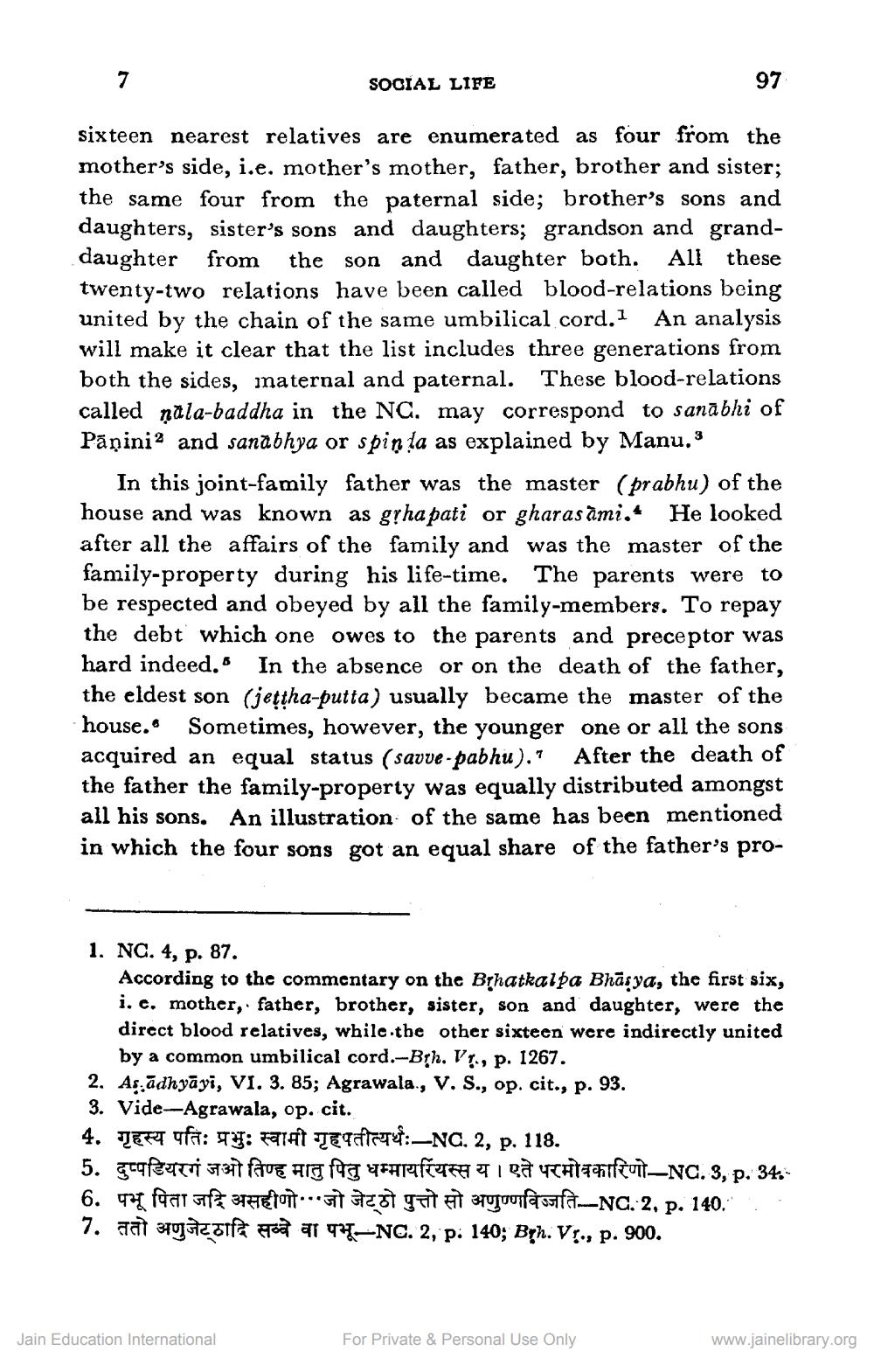________________
7
SOCIAL LIFE
sixteen nearest relatives are enumerated as four from the mother's side, i.e. mother's mother, father, brother and sister; the same four from the paternal side; brother's sons and daughters, sister's sons and daughters; grandson and granddaughter from the son All and daughter both. these twenty-two relations have been called blood-relations being united by the chain of the same umbilical cord.1 An analysis will make it clear that the list includes three generations from both the sides, maternal and paternal. These blood-relations called nala-baddha in the NC. may correspond to sanabhi of Panini and sanabhya or spinla as explained by Manu."
In this joint-family father was the master (prabhu) of the house and was known as gṛhapati or gharasāmi. He looked after all the affairs of the family and was the master of the family-property during his life-time. The parents were to be respected and obeyed by all the family-members. To repay the debt which one owes to the parents and preceptor was hard indeed." In the absence or on the death of the father, the eldest son (jettha-putta) usually became the master of the house." Sometimes, however, the younger one or all the sons acquired an equal status (savve-pabhu)." After the death of the father the family-property was equally distributed amongst all his sons. An illustration of the same has been mentioned in which the four sons got an equal share of the father's pro
97
1. NC. 4, p. 87.
According to the commentary on the Bṛhatkalpa Bhāṣya, the first six, i. c. mother, father, brother, sister, son and daughter, were the direct blood relatives, while the other sixteen were indirectly united by a common umbilical cord.-Brh. V., p. 1267.
2. Aṣādhyāyi, VI. 3. 85; Agrawala., V. S., op. cit., p. 93.
3. Vide-Agrawala, op. cit.
4. गृहस्य पतिः प्रभुः स्वामी गृहपतीत्यर्थः - NC. 2, p. 118.
Jain Education International
5. दुप्पडियरगं जओ तिण्ह मातु पितु धम्मायरिंयस्स य । एते परमोवकारिणो - NC. 3, p. 34. 6. पभू पिता जदि असहीणो...जो जेट्ठी पुत्तो सो अणुण्णविज्जति – NC. 2, p. 140. gazNG. 2, p. 140; Brh. Vr., p. 900.
7. a
For Private & Personal Use Only
www.jainelibrary.org




